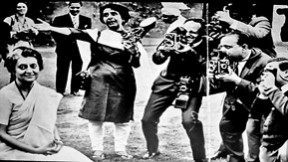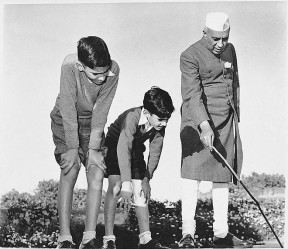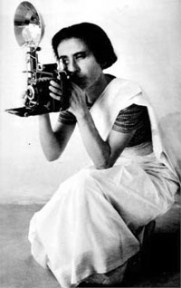Freedom is a word full of peril. Because it engages with something that exists beyond the possible, the real, the confined, the limited. Freedom in its purest sense is not a destructive word. It is not about leaving a footprint on someone’s toil but creating your own. A footprint on a path that is only yours. Because it is only when you create something of value, that you can value the work others do. Freedom is not about playing with mud bombs, About name calling. Petty self-seeking. It is about expanding. Creating. Not just imagining the possibilities but living them. It is a personal revolution, a private uprising that we could be a part of if we only lived beyond our limitations instead of critiquing others. What always struck me about India’s first woman photo- journalist Homai Vyarawalla was that she was a free. In all possible senses. Without much ado, noise or posturing, she lived her life exactly how she wanted to. Creating in her life and in her work, moments of lasting value. Till the very end.
She was born in 1913 and could have been only a decorous Parsi wife but instead chose to do something absolutely radical. She picked up a camera, broke into what had been a purely male-centric world and started freeze-framing history. There is a picture where you can see her, standing apart from a group of male photographers about to click Indira Gandhi. She has a camera and a stance that has more sass and authority than anyone around her, trying to orchestrate a moment that at the moment was not good enough for her. And what a time she had chosen to pick up a camera. She witnessed the history we read about, talk about, occasionally forget. She was there. Living it. Clicking it. surprising even someone like Jawahar Lal Nehru who would, as the lore goes, see her at various events and exclaim, “you too are here?”
And so she was. She captured the fractured moment of Partition, departure of the British, the iconic faces. Gandhi, Nehru, Jackie Kennedy, Queen Elizabeth, US President Dwight D Eisenhower, the Mountbattens. Also untutored, unaffected moments when public lives for a moment shed veneers and became real. Jawahar Lal Nehru with his inquisitive grandsons. Lighting Ms. Simon’s (wife of the then British High Commissioner to India) cigarette. Grinning like a mischievous boy against a board prohibiting photography. Fixing the elegant Jackie Kennedy’s head gear. Dancing with folk dancers. Hugging his sister Vijayalakshmi Pandit, Ambassador to Russia, as he received her at the Delhi airport.
Then India’s triumphs and devastating funerals. Its sweep, its chaos, its restless beauty. For over 35 long years, she lived in the heart of change. And also remained empathetic to extraordinary but unknown lives that were struggling to find hard-won personal freedoms. Women stirring out from confined lives to be acknowledged in public spaces. Her personal code of conduct was however water-tight. She knew she was a woman doing an unlikely job in bemused surroundings and so she would never smile more than necessary, and always exude a forbidding reserve that strangers could not get past. But she also managed to get close enough to world leaders and game changers to capture them with an intimacy few photographers can infuse today in their work even though they are working with far more technology than she had access to.
Friends and acquaintances remember her as a saree clad dynamo on a bicycle, her equipment with her, and working with great discipline and consistency. And when she quit the camera, she never picked it up again because the changing professional mores disillusioned her. Dignity and discipline were important values for her and the world had shifted on its axis and there was less passion and more impolite, back-stabbing ambition. She could not be bothered to change or to keep up with the times. There was also no attempt to milk her historic contribution to India’s political iconography in the quiet years of domesticity. She allowed the use of her pictures without charging even a token fee but had her pet peeves. She liked to be addressed as Mrs Vyarawalla. And did not like technology replacing real communication. It is only in the last few years of her life that her work became a subject of research, discussion and renewed interest. Vyarwalla was widowed by then and still detached from the far reaching impact of her work and happy to lead a fiercely independent life, running her house with the same self-sufficiency she had shown as a photographer.
She was the kind of an artist and a creative professional who is fast becoming extinct today. Someone who engaged with the essence of her work without calculating how it would be received. Someone who never engaged in self-projection because her work spoke loud enough for her. Someone who would always lead a life uncompromised by the words, “What will they say?” even though she was a woman. Without her, a very important chapter in our shared history would have remained invisible because no one could have captured it the way she did. Rest in peace, Homai Vyarwalla for you lived long and well and showed us that a diminutive girl amid a sea of men could not just document history but also make history.
Reema Moudgil is the author of Perfect Eight (http://www.flipkart.com/b/books/perfect-eight-reema-moudgil-book-9380032870?affid=unboxedwri )








